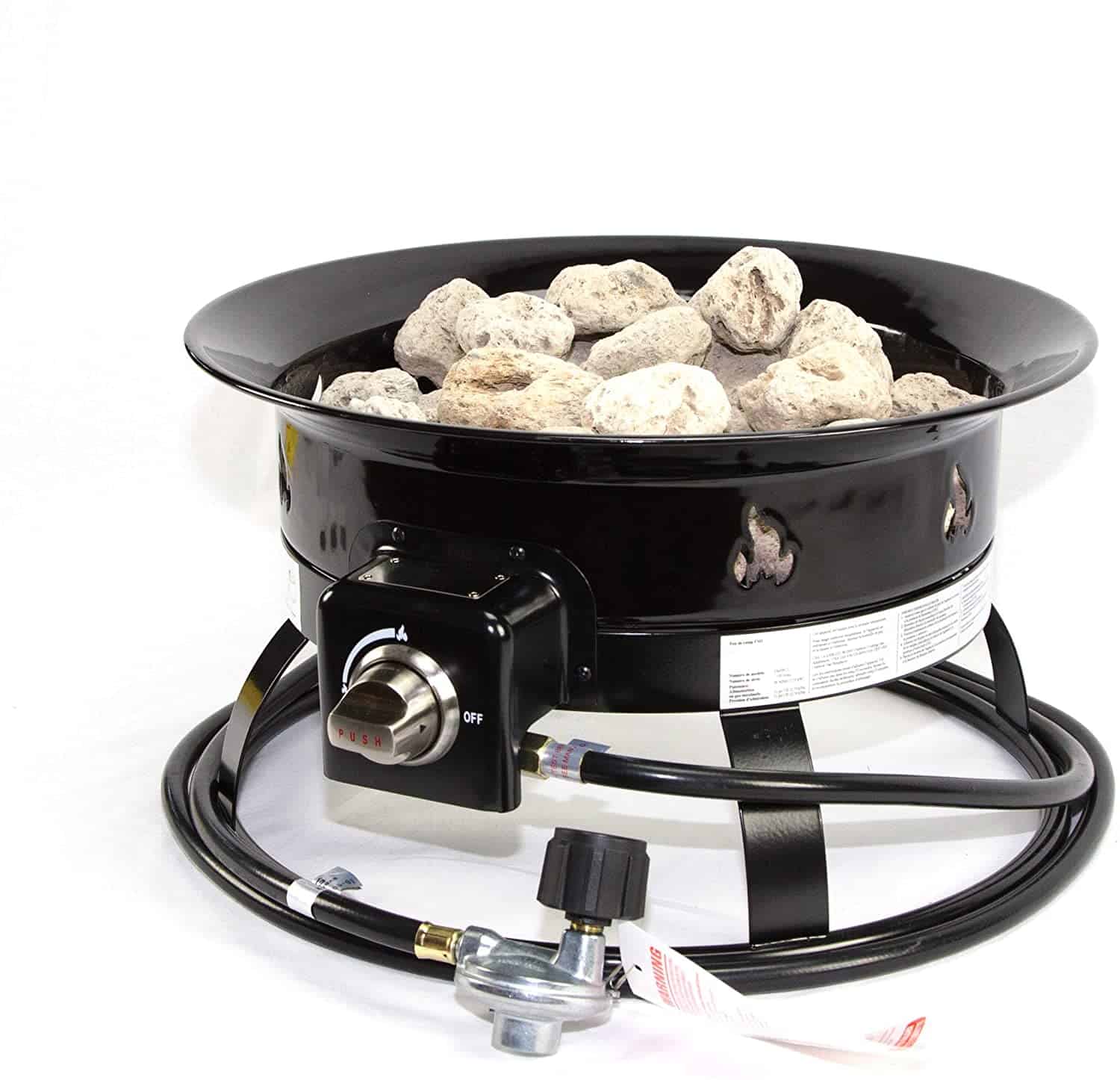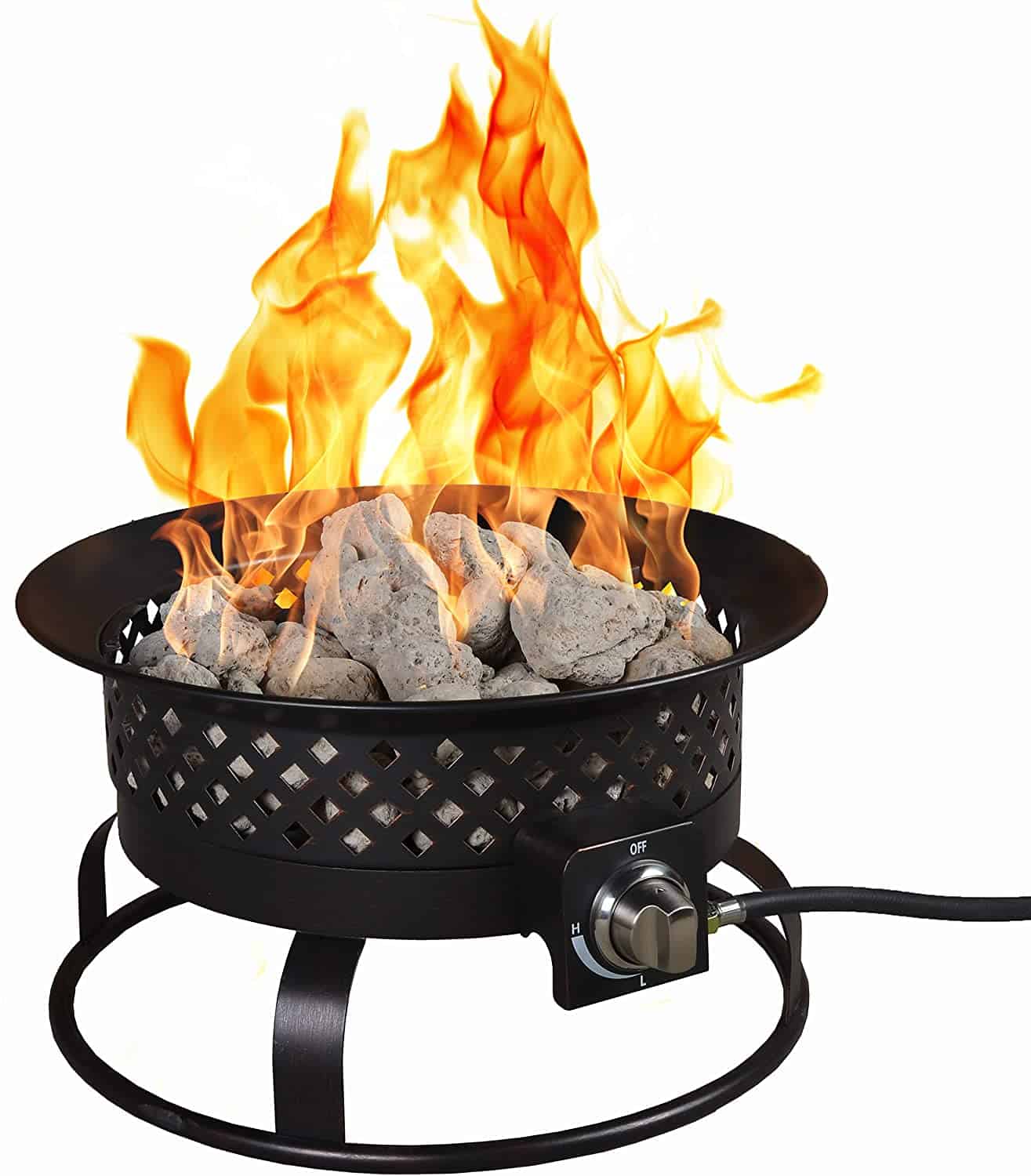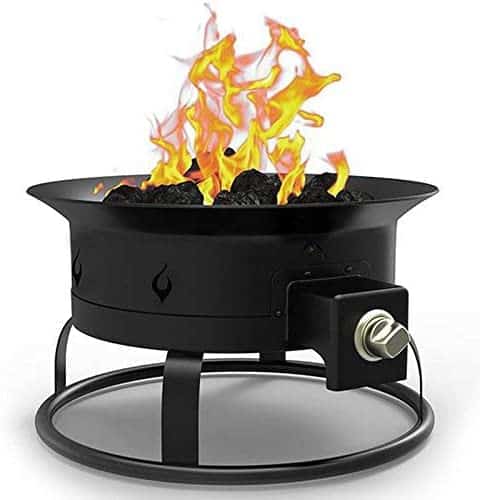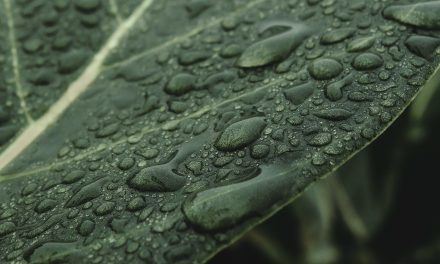A propane fire pit is a fantastic piece of gear if you love having a campfire but don’t love the process of building one each night. However, with so many great models to choose from, it can be difficult to know precisely which one is best for your needs.
We know how difficult it is to select the right portable fire pit, which is why we’ve reviewed 5 of the best options on the market today. Plus, we’ve also put together an informational guide, complete with everything you need to know to get the propane-powered fire pit you need for your next camping trip.
What Is A Propane Fire Pit?
A propane fire pit is a device that can be used to create a cozy fire without the need for logs, kindling, or all the frustration that normally comes with making a fire from scratch. With one of these fire pits, you can instantly start a roaring fire with a propane tank as your fuel source.
Modern propane fire pits can be permanently installed in your backyard or patio. Alternatively, they can be lightweight and portable enough to take on a camping trip. They are simple and easy to use, making them a popular choice for people who want all the joys of a campfire without all the hassle that normally comes with them.
How Do Propane Fire Pits Work?
Propane fire pits are essentially high-powered propane burners, much like what you’d find on a camp stove. The difference is that these devices are designed to burn much hotter – usually more than 50,000 BTU. This is hot enough to simulate the warmth and ambiance that you’d get from creating a wood fire at a campsite.
Regardless of their size, shape, or design, all propane fire pits basically work the same way. At a minimum, they feature a large burner, a connector hose, and a propane tank.
To operate one of these fire pits, you simply need to open up the propane tank and ignite the fumes. Most models will come with some sort of auto-ignition system. However, you can always light them using a long-tipped lighter if things go awry.
Before going to bed, you just need to turn off the fire pit by closing the valve on the propane tank. It’s as simple as that.
Different Types Of Fire Pits
There are two main types of fire pits: propane and wood. Here’s what you need to know:
Wood
Wood fire pits are essentially a large container where you can start a wood campfire. You can build or install a permanent wood fire pit in your backyard using masonry stones or a pre-made kit.
Alternatively, there are plenty of portable wood fire pits that can be used for camping and general backyard fun. These pits are essentially just a large metal basket, often with a metal mesh covering to keep embers and sparks at bay.
The benefit of a wood fire pit is that it allows you to get the full campfire experience without destroying the ground underneath. They are a less impactful way of having a campfire, which is particularly helpful in dry environments.
Additionally, wood-burning models tend to be less expensive than their propane counterparts. However, they still require that you build a wood fire from scratch, which can be difficult in windy or wet conditions.
Propane
Propane fire pits allow people to have a roaring fire without the need to actually build one. They feature gas burners that hook up to propane tanks, which serve as their only source of fuel.
Portable propane fire pits are popular amongst campers because they take away the hassle of constructing a fire. They’re also easier to use in wet and windy conditions. This is because you don’t need to wait for your damp logs to catch to get your fire going when you use propane for fuel.
Portable Campfires vs. Building Your Own
If you can just build a fire at a campsite, you might be wondering why you’d need a propane fire pit. Here are some of the advantages of using a gas fire pit while camping:
- Lower Risk Of Wildfires. Portable propane fire pits are much easier to put out than a regular ol’ campfire. They’re also highly unlikely to get out of control when used properly, so they come with a lower risk of accidentally starting a wildfire.
- Ease Of Use. With a portable propane campfire, you don’t have to spend hours gathering wood, making kindling, and struggling over your fire. Instead, you simply have to open up your propane tank and light the burner.
- More Affordable. Unless you plan to gather all of your wood from dead and downed trees in the forest, having lots of campfires can get expensive really quickly. At many campgrounds and stores, you can pay upwards of $10 for just a few logs of firewood. However, these logs will only provide you with a couple of hours worth of heat. On the other hand, a 20lb (9.1kg) propane tank lasts longer and is cheaper to refill over the long term.
Portable Fire Pits Rules & Regulations
Campfires are often seen as a requirement for any camping trip, but fires on public lands, such as national parks, state parks, and national forests are often highly regulated.
Most outdoor recreation areas will have a long list of rules that you need to follow, whether you’re looking to start a fire in a stone fire ring or use a portable fire pit. Here’s what you need to know:
- Know The Law. Land managers are notoriously unforgiving for fire rules violations. This is for good reason – some 90% of US wildfires are caused by humans each year. Before you go anywhere, be sure to check in on the local laws to see if your fire pit is allowed.
- Get A Permit. In many places, you need to have a fire permit to have a campfire or even to use a camping stove while on public lands. Currently, California is one of the only states in the US that mandates campfire permits for every public land user. However, many parks and forests now have required fire safety permits for their visitors.
- Consult Campground Hosts. If you’re staying at a developed campground, be sure to ask the hosts or managers before you use a portable fire pit. Many campgrounds already have fire rings at each site. So, you may not be allowed to use your own portable fire pit at your campsite.
Can You Use A Propane Fire Pit During Fire Bans?
Yes, usually you can use a propane fire pit during a fire ban. Propane models are generally allowed even when wood-burning pits are not. This is because propane fire pits have on-off switches that can stop a flame from getting out of control.
However, regulations vary from location to location, so it’s your responsibility to check your local laws before using your fire pit. Your local fire department will usually be a good source of information on this topic and they can provide detailed advice specific to your area. You can also check their Facebook page for updates.
The 5 Best Propane Fire Pits
Built using heat-resistant painted steel, the Fire Sense Sporty Campfire is an affordable option for campers on a budget. It measures 15 inches (38.1cm) wide and has a diamond-patterned steel exterior and lava rocks that both allow for adequate airflow for your fire.
This fire pit comes standard with a regulator and hose that’s designed to fit onto a 20lb propane tank. Additionally, its 5.5 foot (1.7m) hose makes it easier to hook up your gas tank at camp. This model even comes with a stabilizing base for your fuel tank to prevent any accidental tip-overs.
The Fire Sense Sporty Campfire is built with a stainless steel burner that can be adjusted to a range of different heat levels up to 60,000 BTU. It’s also built with foldable legs that lock either open or shut for easier transport to and from camp.
pros
- Budget-friendly option
- High heat output (60,000 BTU)
- Lockable and foldable legs for easier transport
- Comes with a propane tank stand for stability
cons
- Does not come with a carrying case
- A bit small for a larger group of campers
Heininger’s Portable Propane Fire Pit is a beautifully crafted fire pit that’s light enough to take on any camping adventure. With a 19 inch (48.3cm) diameter, this model is suitable for keeping a large group warm on chilly evenings.
However, despite its large size, this fire pit weighs only 22lbs (9.9kg), which makes it easier to transport to and from your car. It can also produce up to 58,000 BTU of warmth through its all-weather fire plate that’s topped with decorative lava rocks.
Plus, Heininger’s fire pit is CSA (Canadian Standards Association) approved. This means that it’s been tested by an objective third-party organization to ensure safety and quality for campers.
pros
- CSA approved fire pit
- Lightweight for its size
- Includes lava rocks
- Decorative exterior
- All-weather fire plate
cons
- Does not come with a lid
The Outland Firebowl Cypress is a premium camping fire pit for outdoor enthusiasts that prioritize a mix of both aesthetics and quality. This model has a sizable 21 inch (53.3cm) diameter and weighs in at a respectable 26lbs (11.8kg), including its lava rock set.
It’s built from high quality powder-coated steel with an enamel finish to provide added durability. The burner is made from stainless steel, too, and can put out a maximum of 58,000 BTU.
Thanks to the Cypress’ unique shape it also produces a fuller and more authentic looking flame. Finally, this model comes with an easy-to-use chrome adjustment knob as well as a 10 foot (3m) hose for attaching to your propane tank.
pros
- Large diameter and high heat output
- Comes with a lava rock set
- Durable stainless steel construction
- Chrome adjustment knob for ease of use
cons
- Carry bag sold separately (cover included)
The Bond Manufacturing Aurora Firebowl is a sturdy model for campers that need a durable fire pit for regular use. Thanks to its steel frame and rubbed bronze finish, this fire pit is burly enough to withstand frequent camping trips.
Its wide base and 18.5 inch (46.9cm) diameter provide a great mix of stability and portability. Plus, this model comes with its own lid, which locks on to the top of the fire pit when not in use to serve as a sturdy carry handle for transport.
The Aurora Firebowl comes with a generous 10ft (3m) hose, and regulator for attaching to a propane tank. It also features an auto-ignition system for ease of use, as well as a slick chrome adjustment knob to allow you full control over the intensity of your fire.
pros
- Lid locks on to the top and doubles as a carry handle
- Wide base for stability
- 10ft (3m) propane gas hose
- Easy to use adjustment knob
cons
- Occasional durability issues with the auto-ignition system
#5 – Regal Flame Premium
Designed to emulate a real fire, the Regal Flame Premium is a good option for campers that want all the joys of a wood fire without the hassle. It is made from a high quality steel alloy that’s durable enough for regular camping trips. For added style, this model has a black powder coating finish that adds extra ambiance.
At just 14lbs (6.4kg), this model is one of the lightest on the market today. However, it has a large 19 inch (48.3cm) diameter and an impressive 58,000 BTU of energy output. It is also CSA certified for safety while in camp.
For easier transportation, this propane fire pit comes with a sturdy cover and a set of carry straps. Plus, it includes a natural lava rock set that’s specifically designed to enhance the flame’s flicker for a more natural fire experience.
pros
- Lightweight design
- High BTU heat output
- Stylish black powder coating
- CSA certified for safety
cons
- Expensive
What To Look For In A Propane Fire Pit
Portable propane fire pits are complex pieces of gear. Here are some of the most important things to keep in mind as you shop:
Weight
As a portable fire pit is designed to be, well, portable, it should be a reasonable weight for carrying to and from your car. For the most part, you can expect your camping fire pit to weigh between 14-25lbs (6.4-11.3kg).
Keep in mind that this weight range generally doesn’t include extras, like lava rocks. These stylish extras usually weigh about 5-8lbs (2.3-3.6kg) on top of the weight of the fire pit.
Carry Case/Handle
For easier transport, many camping fire pits will come with some sort of carry case or handle. Carry cases are generally preferred as they also provide some protection from damage during transport.
Alternatively, many models have lids that can lock onto the top of the pit to serve as a carry handle. Others come with a set of straps that help to keep the entire set up together for added convenience.
Style & Aesthetics
There’s nothing more enjoyable than a roaring campfire, so it’s no surprise that propane fire pits are designed to be beautiful and elegant. Many have decorative touches around the rim or the lid to add a bit of style to your camping gear.
Additionally, many fire pits now come with lava rocks, which add to the ambiance of your campsite. Lava rocks also help your fire pit’s flames flicker, providing a more authentic campfire experience.
Safety Features
A camping fire pit involves using open flames, which can be dangerous if not handled properly. Important safety features to look for on a fire pit include on/off valves and regulators for the propane tank.
You might also want to consider purchasing a fire pit that’s CSA approved for safety. That way, you can be confident that your camping fire pit has been tested to high standards before you use it outside.
Where Can I Put A Propane Fire Pit?
Most propane fire pits, except for those that are built-into a patio or deck, are designed to be used in a wide range of locations.
The best place to use a camping fire pit is in an open, outdoor area that’s free from low hanging trees overhead. It’s also best to avoid placing fire pits directly on grass because this can cause the grass to burn and potentially start a fire.
Is It Safe To Use A Propane Fire Pit Inside Or Under A Canopy?
A fire pit should never be placed indoors or within an enclosed space. Fires produce fumes that are highly toxic and hazardous to human health.
Propane fire pits can also emit large amounts of carbon dioxide, which is deadly when inhaled in large quantities. Therefore, a portable propane fire pit should only be used in well-ventilated areas, such as the outdoors.
That being said, it’s often okay to place a propane fire pit (not a wood fire pit) under a canopy, so long as your canopy has a high enough ceiling height. The minimum ceiling height is 6 feet (1.8m) above the burner, but you should aim for a height of at least 8 feet (2.4m) to create an extra margin of safety.
FREQUENTLY ASKED QUESTIONS
Here are our answers to your most frequently asked questions about propane fire pits:
WILL A PORTABLE FIRE PIT DAMAGE CONCRETE?
Unfortunately, portable fire pits can damage concrete. This is because concrete naturally has a lot of small air bubbles in it. When exposed to something hot, like a fire, the air trapped in these bubbles rapidly expands, causing it to slowly crack and spall over time.
Thankfully, concrete damage is really only a problem for wood-burning fire pits. This is because most propane pits can’t produce enough heat to damage your concrete patio.
If you’re really concerned about concrete damage, you can use a fire pit pad. By placing one of these pads under your fire pit, you can protect your concrete (or whatever surface your pit is on) from high temperatures and potential damage.
CAN YOU PUT A PORTABLE FIRE PIT ON GRASS?
You can put a portable fire pit on grass, but only if you’re okay with damaging your lawn. Portable fire pits burn hot (around 1200ºF/650ºC) and that’s more than enough heat to kill any grass that’s within a 3 foot (0.9m) radius.
In general, it’s best not to place your fire pit directly on the grass, even if you don’t care what your lawn looks like. At campgrounds and on public land, doing so may be against local regulations and could cause a wildfire in really dry environments.
Should you want to place your portable fire pit on the grass, get yourself a fire pit pad. That way, you can have a fire wherever it’s most convenient, without fear of burning your lawn or the entire forest.
CAN YOU LEAVE A FIRE PIT BURNING OVERNIGHT?
Fire pits should never be left to burn overnight. A fire pit should be treated just like a regular wood fire, which should never be left unattended.
Always keep a watchful eye on your fire pit to ensure that it doesn’t get out of control. If you are using a wood fire pit, be sure that you have enough water on hand to put out the fire at the end of the night before you go to bed.
The Verdict
Camping fire pits are a great way to get the joys of a campfire without all the work that’s normally involved. Propane models are awesome if you want a hassle-free fire experience that looks authentic and screams simplicity.
- Tint Colors Explained For Polarized Sunglasses - November 19, 2022
- Top 4 Best Portable Camping Showers of 2022 - November 19, 2022
- How to Choose Water Shoes & What to Look For - November 18, 2022











